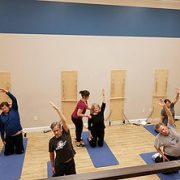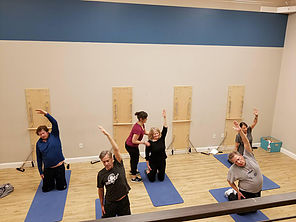Movement is Medicine – When Prescribed Properly!
Movement is Medicine (when prescribed properly)
I have a confession to make. A few months ago I hurt my own back. Yes, you read that correctly, the back pain expert injured her own back! I preach this ALL the time to my clients, but one of the reasons I’m so passionate about helping people with back problems is because the treatment is not cookie-cutter. But once we find what works for you, it is so rewarding.
In my case, I was able to use very specific movements to get my back pain gone, and then start focusing on strengthening exercises to keep it gone. Don’t get me wrong, there were moments when I wanted to call my doctor and ask him for pain pills, and even the idea of an injection crossed my mind once or twice. But because I keep up with the research, I know that these things really don’t work well for long-term results. Aside from the many complications and side effects you could get, quick-fix treatments tend to mask your pain and keep you from doing the real work that is necessary for a long-term solution.
At CJPT & Pilates, long-term solutions are the only thing we are interested in, and we believe that movement is medicine. For all musculoskeletal injuries, including back pain, the research shows that movement and exercise really is the best course of treatment in about 80% of all cases. Ok, I know what you’re thinking. If it were that easy, why can’t you just go to the gym, to Yoga, or follow an exercise video at home to get rid of your own back or knee pain?
It’s because although movement IS medicine, it only works when prescribed for you properly.
Let me explain.
I’m working with a gentleman right now who’s had back pain for over a year. It started after a car accident. He’s tried regular physical therapy, chiropractic, steroid injections and radiofrequency ablation. None of it worked. He feels good when he exercises and moves around, but the pain always comes back. When he came to see us, the really interesting thing I noticed about his back was when he put himself in certain positions, he would stand up and literally be crooked. His spine would shift to one side, and become very painful and stiff. In the PT-world we call this a lateral shift, and it’s a sign that indicates he likely has a bulging disc. The great thing about a bulging disc is that they tend to respond very well to corrective movements. Once we know what movement “fixes” you, we can prescribe it to you. This gentleman can now make himself straight and get rid of his back pain in under a minute. Of course the goal is to get him to the point where he no longer needs this corrective movement, but for now, it quite literally is his medicine.
I think the reason more people don’t use this approach is because it requires a little bit of work, and you don’t often see the results immediately.
When you get an injection, or even take a pill, the pain is gone in a few hours and it will often stay gone for a period of time without you really needing to do much. With movement, you have to stick with it and do it correctly for it to work. And although you can get an immediate reduction in pain from the correctly prescribed movement, it takes several weeks for it to start to stick and produce long-term relief. But here’s the best part about using movement as medicine – it’s natural, there are no harmful side-effects, and you can do it completely on your own.
If you’ve been suffering in pain for a while and tired of using pills or quick fixes to manage your pain, consider seeing a Mechanical Pain Specialist and find out if movement can be your medicine instead!
Dr. Carrie Jose, Physical Therapy Specialist, and Mechanical Pain Expert, owns CJ Physical Therapy & Pilates in Portsmouth, NH, and writes for Seacoast Media Group. If local to Portsmouth, NH, and looking for help – request a FREE Discovery Visit with one of her Specialists by CLICKING HERE.












